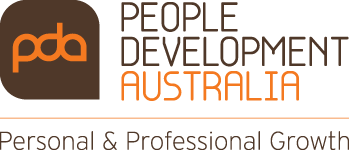Have you ever Googled the word “Leadership”? If so, you’ll find about 800 million search results – it is massive! There will be some junk in there, but there are also brilliant, helpful and practical insights from people who’ve spent a lifetime leading or studying leadership and are willing to share their wisdom with the rest of us. The problem is trying to organise and make sense of all this information, and it can be overwhelming. In this newsletter, we’ll tell you about the four models we use to break down this complexity and define the most important leader behaviours, and four steps you can use to help develop your leaders.
So how do organisations figure out how to effectively develop leaders? Common questions include; what should a leader focus on in a development program? How do we change a leader’s behaviour? How do we help them to understand the value of certain behaviours that are missing from their view of leadership?
From a practitioner’s point of view, it is also about identifying the best and most important ideas about leadership. How do we make leadership theory accessible? How do we take the mystery out of leadership, and define a leader’s responsibilities as clearly as possible?
The goal is to provide straightforward explanations of where a leader might choose to target their personal development efforts. I work in the leader learning space and it’s my job to ensure that people not only have access to this information, but that they can actually understand and adopt it.
Leadership development, like any personal development, is about energy. Where do you put your energy and how much do you put in to that growth area? Leadership development cannot be ‘one size fits all’ – it needs to specifically identify the areas of behaviour that resonate with people around a leader, creating awareness of the behaviour, developing new behaviours, or changing the leader’s perception of its value.
Identifying some of the deepest, “below the surface” thoughts, feelings, assumptions, and beliefs is usually a precondition of behavioural change: one too often shirked in development programs. For example, promoting the virtues of delegation and empowerment is fine in theory, but successful adoption is unlikely if the leader has a clear, “controlling” mind-set (‘I can’t lose my grip on the business; I’m personally accountable and only I should make the decisions’). It’s true that some personality traits such as extroversion or introversion, are difficult to shift but people can change the way they see the world and understand the value of different types of behaviour.
While strength based leadership philosophies have some sound applications, I believe multidimensional leaders are more effective in responding to the shifting circumstances than leaders who cling to what they believe they do best (see article One dimensional Leadership).
Our answer to the above dilemmas is to provide leaders at all levels with straightforward methods to understand their personal leadership equations, and more importantly, show them best practice models to increase their flexibility in navigating beyond their comfort zones of leadership behaviour.
To break down the complexity of leadership, we measure leader behaviour using some of the best tools available; identifying behaviours that should be celebrated as a leader, but also behaviours to be developed such as behaviours linked to best practice leadership theory and content.
The goal is to take the mystery out of leadership and define a leader’s responsibilities as clearly as possible. The solution is a suite of tools and programs that we would like to share with you in this newsletter. Feel free to sign into out Public Resources page to access copies of these profiles and tools
1. Managing Self; Genos Emotional Intelligence Survey- how a leader’s emotions affect their behaviour, decisions and performance
2. Managing Relationships; DiSC four behavioural styles when working with others
3. Managing a Team; 363 for Leaders – a 360-degree leader development tool to measure 24 leader behaviours
4. Leading an organisation; Work of Leaders – measures the leader across 18 behaviours in managing the organisation
Here are some steps we like to use in developing leaders;
1. Exploring patterns of behaviour
This step uses tools, feedback processes and leader competency frameworks to identify and measure a leader’s behaviour. This can include behavioural profile tools, self-assessment tools, 360 feedback, your organisation leadership competency framework, or (my favourite) 365 feedback (feedback every day of the year).
2. Generating and testing awareness
Is the leader aware of their behaviour and the impact on others? 360 feedback often provides a ‘self’ and ‘others’ rating that can measure self-awareness, which is crucial to leadership effectiveness. Is the leader aware they act the way they do? Are they aware how their behaviours impact others within their team (e.g motivate or demotivate)? Do the leader’s behaviours drive the effectiveness and performance of their business unit or the organisation? Do they value the behaviour that others see as important?
3, Explore common psychological drivers associated with each behaviour
What stops someone from showing confidence? Taking charge? Being humble? Showing empathy and recognition? Many tools give you a good insight to some of the ways the leader might view their world. “I view myself as successful if I am strong – empathy and recognition are soft and are the opposite to strong” or “I view myself as successful if I have supportive relationships and sound connections – conflict and holding people accountable upsets harmony within the workplace and should be avoided” – these could be some of the underlining views of behaviour. Good coaching and counselling can assist with the identification of these drivers and can pinpoint how these drives impact on the leader’s effectiveness.
4. Exploring lessons and suggestions to help increase effectiveness
Coaching is a great future-focused, goal-oriented option for the growth of leaders but there are many other ways for leaders to develop their approach. Reading, developing business networks, a sound mentor, further study, self-reflection and embracing challenges, can all be avenues to increase a leader’s effectiveness.
If you would like to explore ways to develop your leader contact us

